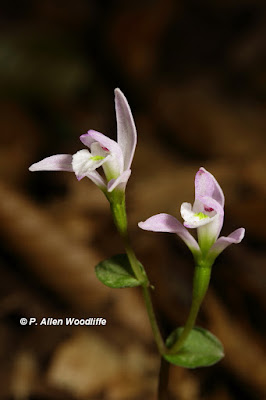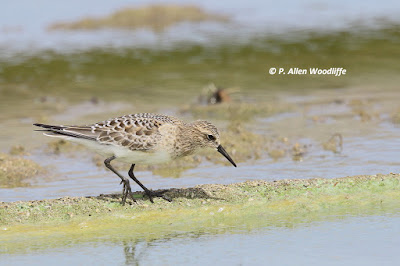A few days ago I decided to check out some of my favourite local spots at this time of year. First on the list was the Dog Beach access at Rondeau, since it is a popular place for gulls, terns and even a few shorebirds right now. It is also a popular place for park users who want to take their dog to the beach....hence the name...so I thought a weekday might be less busy.
My target species for this spot was Little Gull. Somewhat surprisingly, they have not been as plentiful in the park checklist area this year, and as a result, I am still looking for my first one of the year! August is sometimes a good time, and there is often one or more scattered amongst the gulls that are building up on the lake's beaches and shorelines.
There were gulls, several hundred of them in fact. Most were Ring-billed with a few Herring. Very few Bonaparte's Gulls were there at the time I stopped by, although I have heard of other birders sometimes seeing several hundred in the area when they visited.
There were a few Caspian Terns.....
....as well as Common Terns....
....but no Little Gull.
Right beside the parking area for this beach access was a good stand of Cylindrical Blazing-star (
Liatris cylindracea). It is an uncommon plant in Ontario, but in sandy prairie like settings, it can be abundant. A nice looking Spicebush Swallowtail was nectaring on a few flowers, but seldom stayed still long enough for a photo.
Another highlight at this time of year, is a little known orchid: Small Green Wood Orchid (
Platanthera clavellata). It is widespread, but not abundant, and seems to favour wet edges of sloughs, especially a really old rotting log.
After leaving the park, a stop at the Blenheim Sewage Lagoons was in order, as the water levels are conducive for shorebirds.....just in time for their fall migration. The male Redhead is still around, and often hangs out with a few Ruddy Ducks.
Short-billed Dowitchers were represented by three individuals,
A couple of Semipalmated Plovers were mixed in.
A little more surprising was a dozen Black-bellied Plovers.
There was a ton of swallows, with the vast majority of them being Tree Swallows. They were on the power lines, swooping over the water or grass or just hanging out a-top the shrubby willow trees.
A little farther afield was a stop along the Thames River, south of Thamesville. It is a predictable spot for Ebony Jewelwing, American Rubyspot as well as the much rarer Smoky Rubyspot....three distinctive damselflies. There is some major maintenance just getting underway at this bridge, but I was able to access the river from the north side.
Ebony Jewelwing is a fairly widespread damselfly, and the male is easily one of the most recognizable, with its almost solid black wings and iridescent green body. It is also very active, and this one only landed once, and then it was right in front of me at a head-on angle. I got this one shot.
American Rubyspot is distinctive with its ruby red base to the wings, and the male having a ruby red thorax.
This next shot shows an obliging female (l) and male (r). The female still has the red base to the wings, but the thorax is not red.
There were no Smoky Rubyspots visible while I was there.
A bit northeast of Thamesville is a prairie patch along a railway. Fortunately it is right at a road intersection, so it is easily accessible. I use the term prairie loosely here, as the prairie vegetation is made up mostly of forbs...there are virtually no prairie grasses present, some of which should be there if it is really a prairie. Some of the prairie plant highlights known from this site include Yellow Ladies'-tresses (
Spiranthes ochroleuca) and Prairie Cinquefoil (
Potentilla arguta). Unfortunately neither have been seen in recent years, although they could still be present. The time of my visit was a little early for the former species, and a little late for the latter one. Other prairie type species which
are present include Foxglove Beardtongue (
Penstemon digitalis), Prairie Thistle (
Cirsium discolor)....
 |
| Prairie Thistle |
....Wild Bergamot (
Monarda fistulosa), Meadowsweet (
Spirea alba) and others. One of the most obvious ones during this visit was Missouri Ironweed (
Vernonia missurica), a rare plant in Ontario, and it was attracting a whole bunch of butterflies.
 |
| Missouri Ironweed |
I was surprised at the number of Giant Swallowtails. There were at least 8 but probably as many as a dozen.
 |
| Trio of Giants |
A couple of Eastern Tiger Swallowtails were in the mix.
A single Viceroy was noted.
At least three Black Swallowtails were there.
There were also Monarchs, Silver-spotted Skippers, Northern Broken Dash and several 'Summer' Crescents.
It was a great way to end the outing!























































